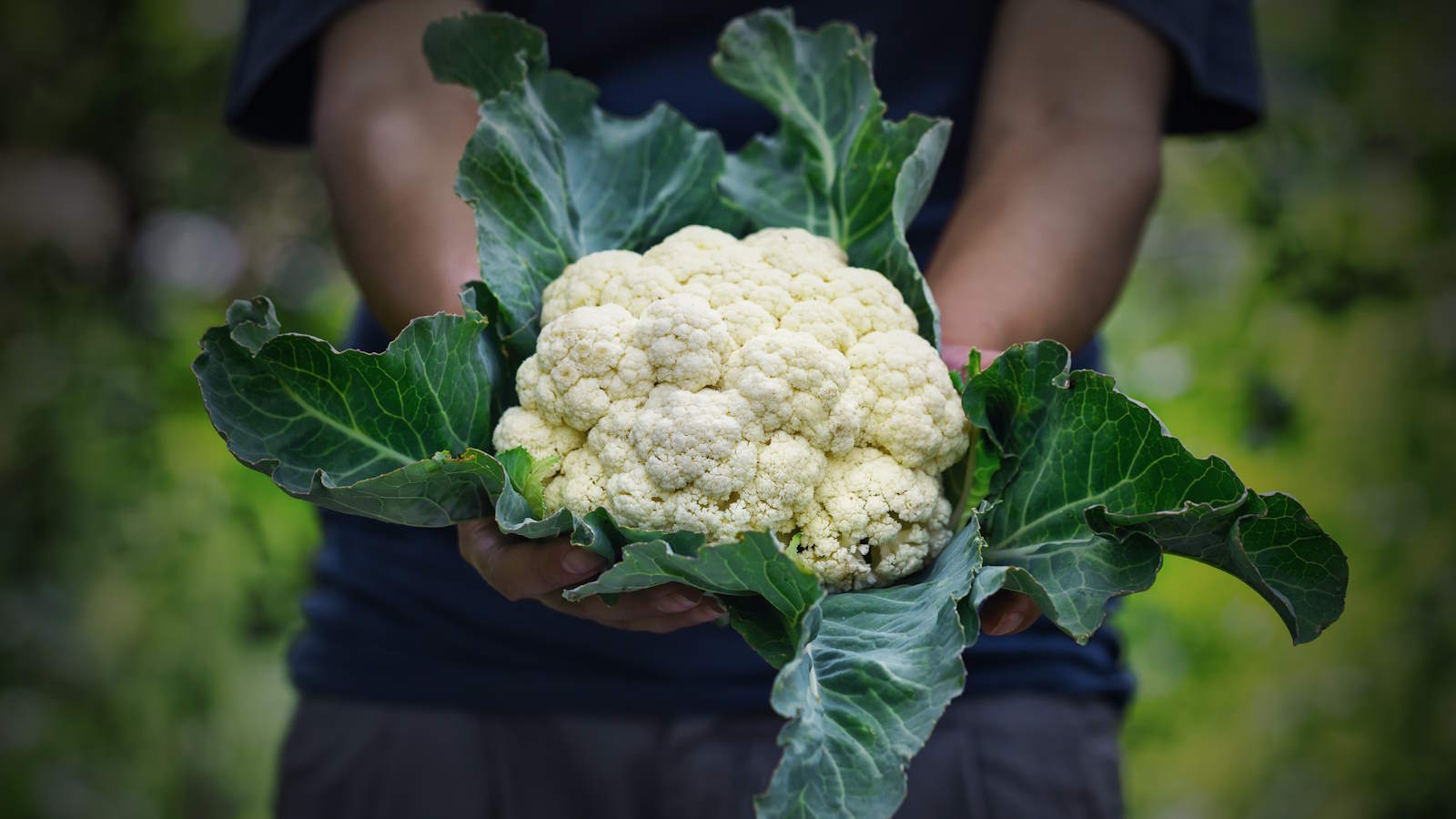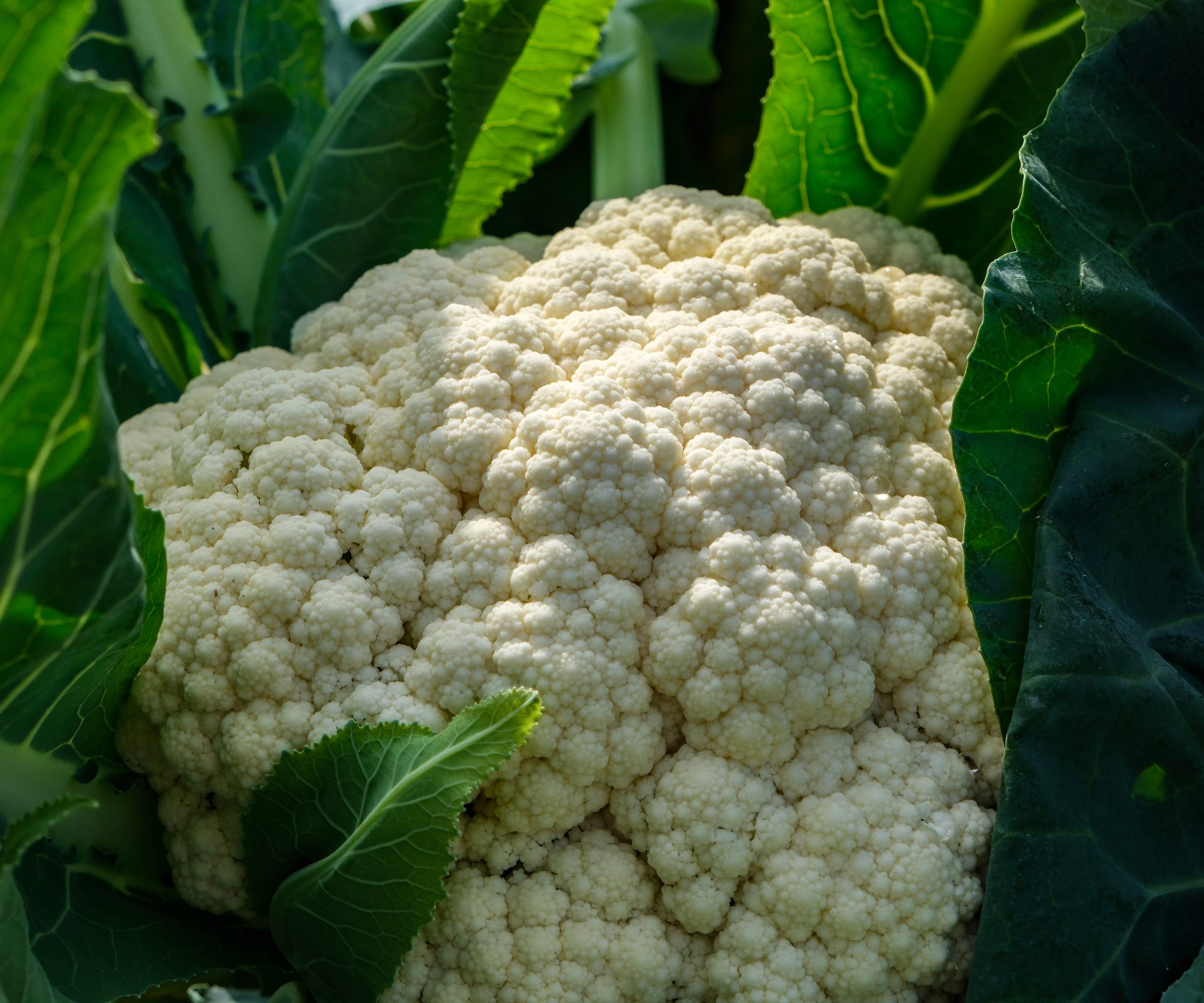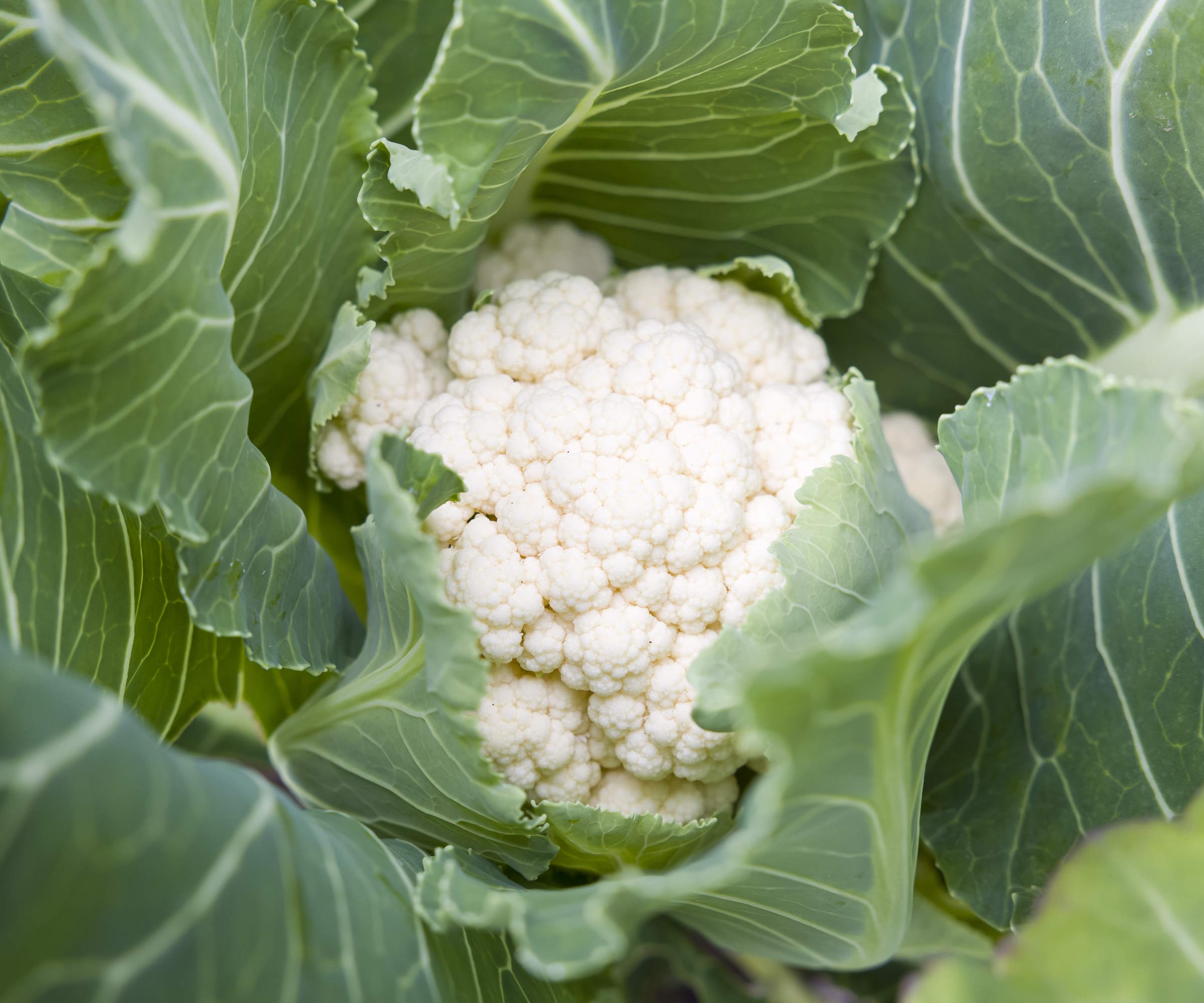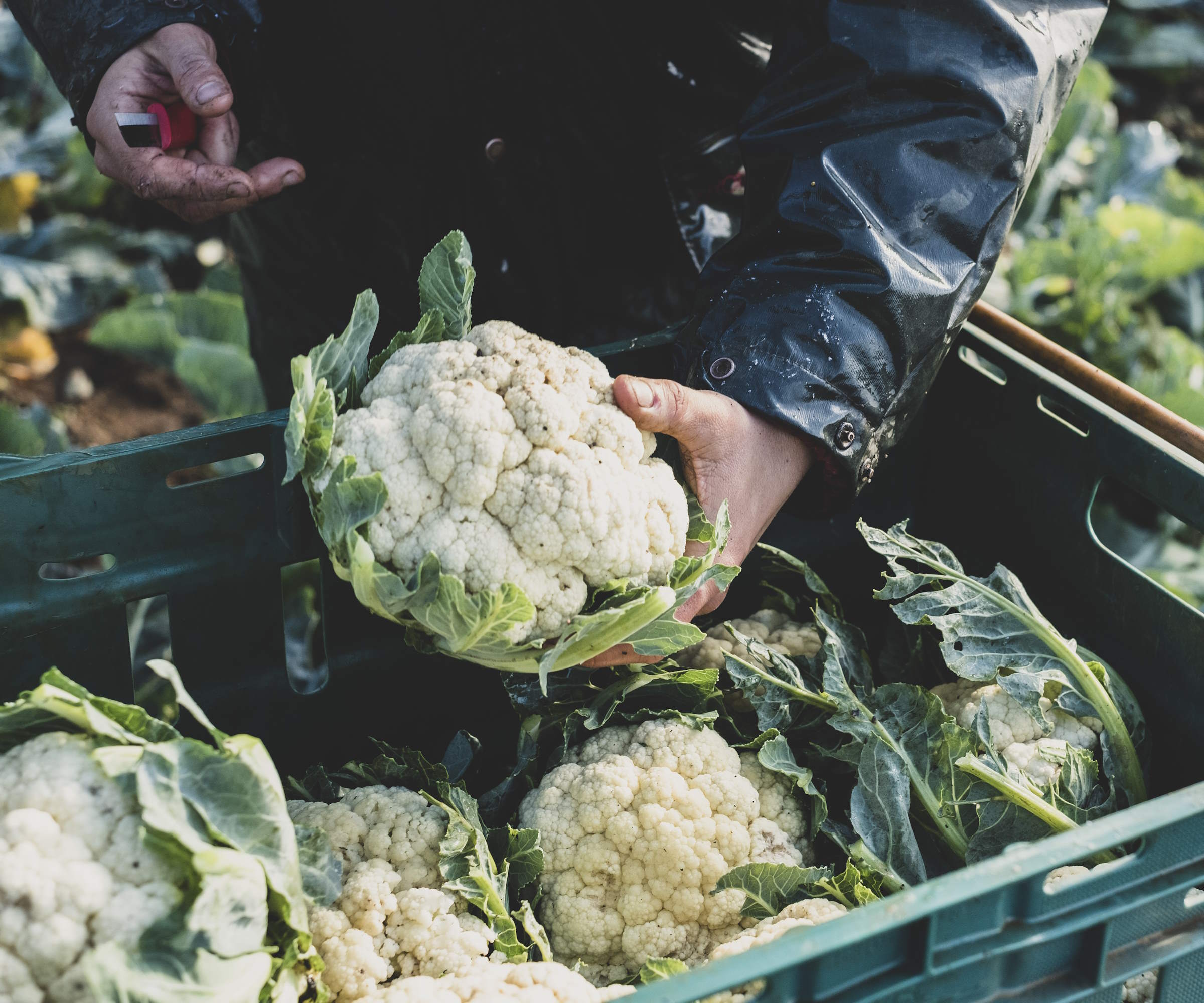
Cauliflowers are regarded as difficult crops to grow. They are temperamental vegetables, at risk of many pests and diseases, and it can be tricky to get the perfect head of cauliflower to harvest. If you can accommodate the plant’s needs, however, growing cauliflower need not be challenging.
They have long been one of my favorite vegetables to grow and the satisfaction of harvesting a beautiful head of cauliflower is huge. I have grown cauliflowers for chefs to use in restaurants, sell to visitors in public gardens, and enjoy at home. Knowing the signs that a cauliflower is ready to harvest and picking it safely is a great horticultural skill - and it is not difficult to learn.
To help you master this mysterious vegetable, let's look closely at how and when to harvest cauliflower so you can impress your family and friends with your pristine and flavorful brassicas.

Take care at harvesting time
Cauliflower is a brassica plant that can succumb to many pests, including cabbage worms, cabbage white butterflies, and cabbage loppers. These plants want to be protected with fine insect netting to keep caterpillars out of your vegetables.
The netting can be removed to harvest cauliflowers, however, keep a close eye when you put the net back in place so that there are no moths or butterflies under there. Any pests within the nets can lay eggs on the brassica leaves, which will hatch into larvae that will start to eat the foliage.
When harvest cauliflower

Cauliflower can have a very long harvesting season, this can last for many months but will depend on the types you grow and if you implement succession sowing as part of a seed sowing plan for your vegetable garden. The crop has a 60-90 day growing season, depending on the variety, though the timing will depend on when they were planted, the variety, and the weather.
Different types and varieties of cauliflower can be sown, grown and harvested at varying times of year. Winter types of cauliflower are harvested in spring, early summer varieties are harvested in early and mid-summer, and fall cabbages are ready to harvest in late summer and early fall.
Cauliflowers are not guaranteed to develop at the same time. Quite often lots are ready at the same time, however, sometimes cauliflowers that were sown and planted at the same time can reach maturity over a staggered period.
The signs that a cauliflower is ready to harvest are when the head is firm, tight and usually 6-8 inches in diameter. Always refer to the seed packet for your particular variety to find out the expected size of the head to help you harvest at the correct time.
Diane Kuthy, founder of How To Grow Everything, says that compact and dense curds are tender and sweet, while the plant becomes ‘bitter and inedible’ as the head ages and the curds separate from each other. Picking the head too early, before it is fully matured, is also a vegetable harvesting mistake as it will be tough and bitter.
‘The trick with harvesting cauliflower is to wait until you get a nice dense head, but before the curds begin to loosen and separate,’ she advises. ‘The difference between a ready-to-harvest cauliflower head and an inedible one can be as quick as a day or two.
‘So, once your cauliflower plant begins to produce heads, keep a close eye on them. It's better to harvest a little too early than too late.’
Pay close attention to harvesting the cauliflower before the head starts to separate and they also start to change in color, for example, white varieties can begin to take on a yellow tinge once they get past their best, which gives the cauliflower a more bitter taste.
The color change as the crop matures is due to the sunlight. You can take precautions and blanch immature heads by tying some of the plant’s large leaves around the head to block the sun. Start doing this once the heads are around the size of a tennis ball and the cauliflower should be fine to be left tied up for two weeks before harvesting.
Blanching helps maintain the color and flavor, though there are self-blanching varieties of cauliflower, such as the snowball self-blanching cauliflower, available at Burpee, which removes the need for having to tie up the eaves as they naturally curl themselves to protect the head.
How to harvest cauliflower

The actual task of harvesting a cauliflower head is simple and requires only basic garden tools. It can be done with a sharp harvesting knife or a pair of loppers, only make sure any tools are clean and sharp to not damage the cauliflower head.
Take hold of the cauliflower head and cut the stem a few inches, leaving several leaves attached to the head to protect the crown. Leaving some leaves attached preserves the shelf life and gives the head a protective layer until it is ready to be used. Be careful harvesting cauliflower heads as they are delicate and can easily bruise.
When you harvest broccoli or cabbage, the stumps are left in the ground as they can resprout smaller side shoots for a second harvest. This is not the case with cauliflower, they will not shoot again.
However, Kate Russell, an experienced vegetable gardener and author, advocates for leaving part of the cauliflower in the ground rather than ripping up the entire plant, roots and all. She says: ‘Cut the plant off at soil level and leave the below-ground portion to feed the soil, worms, and soil microbes.’
The leaves, stems, and roots of cauliflower plants, together with any heads that have matured too far and split or started flowering, can be added to your heap or pile to make homemade compost.
Shop harvesting tools
A versatile garden knife for every job in the garden, use it for digging, transplanting, sawing, cutting, removing, dividing, and even measuring soil depth for planting.
Hand selected by Martha Stewart and tested on her farm, these loppers have carbon steel, rust-resistant 5. 2-inch lopper blades that slice through branches up to 3/4-inch thick.
A pocket-sized tool designed to sharpen a variety of garden tools, including pruners, hedge trimmers, mowers and axes.
How to store cauliflower
Pests can be hidden within the cauliflower head. Soaking the head in a bowl of water containing a tablespoon of salt can draw out any worms or insects inside the head. This eliminates any concerns of pests eating the head while it is stored.
Rinse the cauliflower post-soaking and dry it completely before storing it. Cauliflowers can be stored in the fridge for up to a week. Or it may be frozen, pickled, or canned, to be kept fresh for longer.
FAQs
Can you eat cauliflower that has bolted?
Bolting is when the plant starts to go to seed and forms flowers. If you do not harvest the cauliflower in sufficient time, the head will begin to form lots of small flowers. Unfortunately, at this stage, it becomes inedible.
Why did my cauliflower turn purple?
There are purple types of cauliflower you can grow, however, if you are growing a white variety and it turns purple that could be a problem. Spikes in temperatures, with excessive heat and sunlight, can cause the cauliflower head to turn a purple, red, or blue color as it develops. The cauliflower is still edible when it has a purple tinge, but it may taste a bit different to a standard cauliflower.
Most varieties of cauliflowers require a two to three-month growing period in your kitchen garden. With careful planning, you can grow a selection of cauliflowers for a long harvest of heads, perfect for if you want to roast, bake, or puree with them, or make family favorites such as cauliflower cheese. Indeed, the list of potential recipes for homegrown cauliflower can be mammoth. And no cauliflower head should be wasted now that you know the perfect time to pick them.







